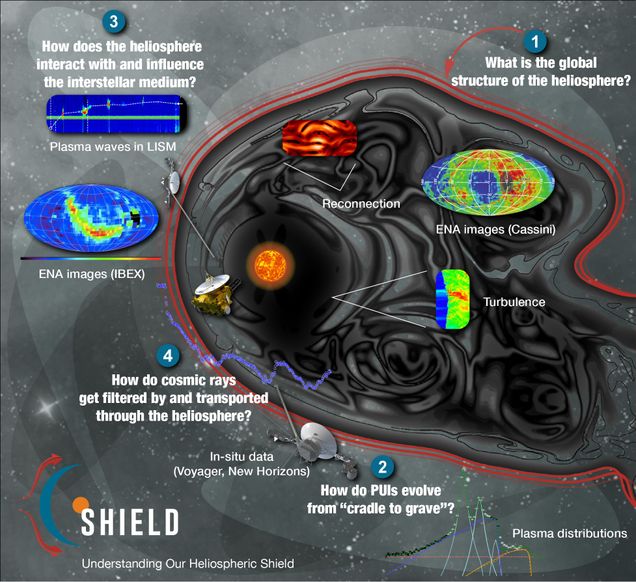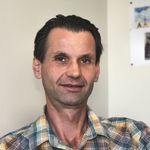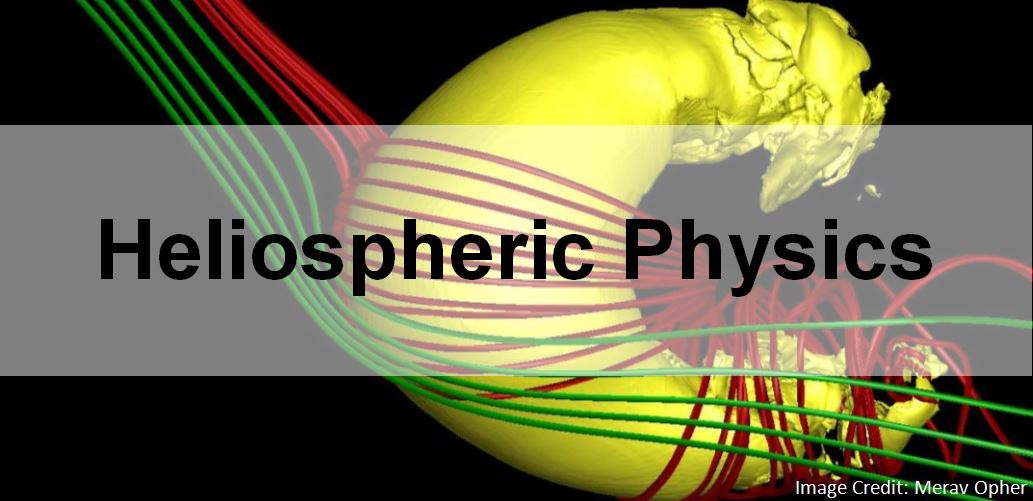 SHIELD
SHIELD
The SHIELD NASA DRIVE Center is a national and international collaboration involving researchers from over half a dozen institutions, and led by Merav Opher from the Astronomy Department at Boston University and the Center for Space Physics.
SHIELD will: (1) determine the global nature of the heliosphere; (2) determine how pickup ions evolve from ‘cradle to grave’ and affect heliospheric processes; (3) establish how the heliosphere interacts with and influences the LISM; and (4) establish how cosmic rays are filtered by and transported through the heliosphere.

Research Personnel
Professor Merav Opher (AST)
 Computational and theoretical plasma physics in space and astrophysics; Interaction of the solar system with the interstellar medium; solar wind; shocks in the lower corona, T-Tauri and Solar-Like Stars.
Computational and theoretical plasma physics in space and astrophysics; Interaction of the solar system with the interstellar medium; solar wind; shocks in the lower corona, T-Tauri and Solar-Like Stars.
Merav Opher’s interests are in how plasma and magnetic effects reveal themselves in astrophysical and space physics environments. In particular, in how stars interact with the surrounding media, how the solar system interacts with the local interstellar medium, and the interaction of extra-solar planets with their host stars. Her other interests are in how magnetic disturbances are driven and propagate from the Sun to Earth. She uses state-of the art 3D computational models to investigate these phenomena.
View Professor Merav Opher’s Profile Here
Research Scientist Bertalan Zieger

Dr. Zieger’s specializations and research interests include space weather and space climate, the coupled interaction of the solar wind with planetary magnetospheres and ionospheres. Global magnetohydrodynamic (MHD) simulation of Saturn’s magnetosphere and the magnetosphere-ionosphere coupling in Earth’s paleomagnetosphere. Modeling of solar wind propagation from 1 AU to the outer planets and Pluto and reverse solar wind propagation to Mercury. CLUSTER and THEMIS multi-scale analysis of reconnection and dipolarization events in the Earth’s magnetotail, including particle acceleration at plasma jet fronts. Global multi-ion multi-fluid MHD simulations of the heliosphere and its interaction with the interstellar medium to support the Voyager and IBEX missions. Dispersive shock waves and magnetosonic turbulence in multi-ion plasma and its application at the termination shock, in the heliosheath, and in planetary magnetosheaths.
View Dr. Bertalan Zieger’s Profile Here
Postdoctoral Associate Jesse Miller

Jesse Miller investigates how events in our own Milky Way Galaxy affect Earth and the rest of the solar system. Within the last ten million years, uncomfortably close supernovae compressed the solar wind, exposing the outer planets to the harsh environment of the Galaxy. Our passage through a dense interstellar cloud may have even affected Earth’s climate. Dr. Miller uses various numerical simulations to investigate these effects, from hydrodynamic models of the heliosphere to chemistry-climate models of our atmosphere, ultimately probing multidisciplinary connections between astronomy, heliophysics, and atmospheric science.
View Dr. Jesse Miller’s Profile Here
